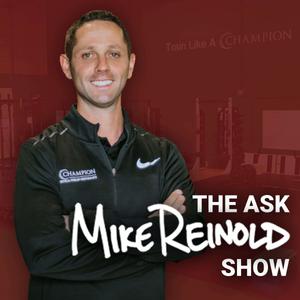
The Ask Mike Reinold Show
Mike Reinold
Answering all your physical therapy, fitness, strength and conditioning, sports performance, and career advice questions. Join me, Lenny Macrina, Dave Tilley, Dan Pope, Mike Scaduto, Lisa Russell, Kevin Coughlin, Diwesh Poudyal, and others from my team at Champion Physical Therapy and Performance in Boston, MA and learn how we help people feel better, move better, and perform better. Ask your questions at http://mikereinold.com/askmikereinold.
- 27 minutes 18 secondsWhat it Takes to Start a Cash Based PT Practice
It’s so awesome to see so many cash-based physical therapy businesses starting around the country.
It’s really been an amazing experience for us at Champion to be out-of-network with health insurances for over 10 years.
In this episode, we have some advice, pros, and cons for those looking to succeed with this model.
Click Here to View My Online Courses
To see full show notes and more, head to: https://mikereinold.com/what-it-takes-to-start-a-cash-based-pt-practice/
Want to learn more from me? I have a variety of online courses on my website!
Disclaimer: This post contains affiliate links. If you make a purchase, I may receive a commission at no extra cost to you._____
Want to learn more? Check out my blog, podcasts, and online courses
Follow me: Instagram | Twitter | Facebook | Youtube30 January 2025, 11:00 am - 16 minutes 19 secondsACL Reconstruction with Lateral Extra-Articular Tenodesis (LET) - #AMR353
We’re starting to see more and more ACL reconstruction procedures with an LET, or lateral extra-articular tenodesis. Especially in revisions and younger female athletes.
In this episode we talk about the technique, how it changes the rehab progression, and some tips on what to watch out for.
Click Here to View My Online Courses
To see full show notes and more, head to: https://mikereinold.com/acl-reconstruction-with-lateral-extra-articular-tenodesis-let/
Want to learn more from me? I have a variety of online courses on my website!
Disclaimer: This post contains affiliate links. If you make a purchase, I may receive a commission at no extra cost to you._____
Want to learn more? Check out my blog, podcasts, and online courses
Follow me: Instagram | Twitter | Facebook | Youtube16 January 2025, 11:00 am - 14 minutes 19 secondsWhat Athletic Qualities Do We Test (and How)? - #AMR352
If you want to help your athletes maximize their potential, you need to have a system to assess athletic qualities.
This is important to individualize programming and monitor progress.
We follow a few steps in our system:
1. Identify the athletic qualities needed in a sport
2. Identify an assessment to measure this quality
3. Determine the technology neededHere are the athletic qualities we value at Champion, and how we assess them.
Click Here to View My Online Courses
To see full show notes and more, head to: https://mikereinold.com/what-athletic-qualities-do-we-test-and-how/
Want to learn more from me? I have a variety of online courses on my website!
Disclaimer: This post contains affiliate links. If you make a purchase, I may receive a commission at no extra cost to you._____
Want to learn more? Check out my blog, podcasts, and online courses
Follow me: Instagram | Twitter | Facebook | Youtube2 January 2025, 11:00 am - 24 minutes 1 secondBuilding Return to Sport Programs - #AMR351
One of the most common questions we tend to get over time is how to return athletes back to sport after an injury.
This is one of the main topics in our online Champion Sports PT Mentorship, and probably the most popular portion of the program for past students (BTW, our next cohort starts in January… click here to learn more).
In this episode, we talk about the criteria to start a return to sport progression, and then how to advance our athletes to make sure they are ready to return to competition.
Click Here to View My Online Courses
To see full show notes and more, head to: https://mikereinold.com/building-return-to-sport-programs/
Want to learn more from me? I have a variety of online courses on my website!
Disclaimer: This post contains affiliate links. If you make a purchase, I may receive a commission at no extra cost to you._____
Want to learn more? Check out my blog, podcasts, and online courses
Follow me: Instagram | Twitter | Facebook | Youtube19 December 2024, 11:00 am - 21 minutes 57 secondsIs Limb Symmetry Index Our Goal? - #AMR350
Limb symmetry index is often used to measure performance and determine return to play.
Makes sense, but what if the other side isn’t perfect?
We prefer to look at more than just LSI, but there’s a bunch that goes into it. We discuss in this episode.
Click Here to View My Online Courses
To see full show notes and more, head to: https://mikereinold.com/is-limb-symmetry-index-our-goal/
Want to learn more from me? I have a variety of online courses on my website!
Disclaimer: This post contains affiliate links. If you make a purchase, I may receive a commission at no extra cost to you._____
Want to learn more? Check out my blog, podcasts, and online courses
Follow me: Instagram | Twitter | Facebook | Youtube5 December 2024, 11:00 am - 20 minutes 16 secondsRotator Cuff Repair Surgery in Younger Patients - #AMR349
Rotator cuff tears are becoming more common in younger active patients in their 40s and 50s.
Typically, they are small tears at this time, but what should we do with them? Should we consider surgery? Should we avoid it at all costs?
We talk about some of the things to consider in this episode.
Click Here to View My Online Courses
To see full show notes and more, head to: https://mikereinold.com/rotator-cuff-repair-surgery-in-younger-patients/
Want to learn more from me? I have a variety of online courses on my website!
Disclaimer: This post contains affiliate links. If you make a purchase, I may receive a commission at no extra cost to you._____
Want to learn more? Check out my blog, podcasts, and online courses
Follow me: Instagram | Twitter | Facebook | Youtube14 November 2024, 11:00 am - 20 minutes 23 secondsOur Favorite Journals to Stay Current - #AMR348
There are a ton of scientific and medical journals these days. Seems like there are more and more each year.
We’ve talked over the years about how there are actually some journals you want to avoid, and others that you want to follow.
In this episode, we talk about our current favorites plus some other current thoughts on how to stay current.
Click Here to View My Online Courses
To see full show notes and more, head to: https://mikereinold.com/our-favorite-journals-to-stay-current
Want to learn more from me? I have a variety of online courses on my website!
Disclaimer: This post contains affiliate links. If you make a purchase, I may receive a commission at no extra cost to you._____
Want to learn more? Check out my blog, podcasts, and online courses
Follow me: Instagram | Twitter | Facebook | Youtube31 October 2024, 10:00 am - 19 minutes 34 secondsBFR Update for 2025: How We’re Using Blood Flow Restriction Training - #AMR347
Blood flow restriction training has been such a great addition to what we do in physical therapy.
Just like everything else, the more we use it, the more we refine what we are doing.
Here are our latest thoughts on how we are using BFR at Champion.
Click Here to View My Online Courses
Check out the show notes below to see our latest recommendations on BFR cuffs.
To see full show notes and more, head to: https://mikereinold.com/bfr-update-for-2025-how-were-using-blood-flow-restriction-training/
Want to learn more from me? I have a variety of online courses on my website!
Disclaimer: This post contains affiliate links. If you make a purchase, I may receive a commission at no extra cost to you._____
Want to learn more? Check out my blog, podcasts, and online courses
Follow me: Instagram | Twitter | Facebook | Youtube17 October 2024, 10:00 am - 19 minutes 6 secondsHow to Treat Acute Lumbar Radiculopathy - #AMR346
We’ve all had the patient walk in the door with acute low back pain. It’s awful. They’re in a ton of pain and can’t function.
In this episode, we discuss our strategies for working with people with acute lumbar radiculopathy to get them on the right path as soon as possible.
Click Here to View My Online Courses
To see full show notes and more, head to: https://mikereinold.com/how-to-treat-acute-lumbar-radiculopathy/
Want to learn more from me? I have a variety of online courses on my website!
Disclaimer: This post contains affiliate links. If you make a purchase, I may receive a commission at no extra cost to you._____
Want to learn more? Check out my blog, podcasts, and online courses
Follow me: Instagram | Twitter | Facebook | Youtube3 October 2024, 10:00 am - 14 minutes 43 secondsHow to Periodize a Rehabilitation Program - #AMR345
We all know it’s important to challenge our patients with load during the exercise progression of a rehabilitation plan.
Many people like to poke fun at the concept of 3 sets of 10 repetitions, probably because some abuse it, but there is a time and place for everything.
In this episode, we discuss set and rep schemes and how we periodize our exercises during physical therapy and even the gym.
Click Here to View My Online Courses
To see full show notes and more, head to: https://mikereinold.com/how-to-periodize-a-rehabilitation-program/
Want to learn more from me? I have a variety of online courses on my website!
Disclaimer: This post contains affiliate links. If you make a purchase, I may receive a commission at no extra cost to you._____
Want to learn more? Check out my blog, podcasts, and online courses
Follow me: Instagram | Twitter | Facebook | Youtube19 September 2024, 10:00 am - 17 minutes 4 secondsShould You Delay Range of Motion after a Rotator Cuff Repair? - #AMR344
Rotator cuff repair surgery is one of the most common procedures in physical therapy, yet the recommended postoperative guidelines vary significantly.
Different doctors worldwide disagree on what’s best. Some want to be conservative and delay range of motion and physical therapy to maximize the chance that the repair does not fail.
But is that best? Are there negatives?
In this episode, we discuss some of the science behind delaying range of motion after rotator cuff repair surgery.
Click Here to View My Online Courses
To see full show notes and more, head to: https://mikereinold.com/should-you-delay-range-of-motion-after-a-rotator-cuff-repair/
Want to learn more from me? I have a variety of online courses on my website!
Disclaimer: This post contains affiliate links. If you make a purchase, I may receive a commission at no extra cost to you._____
Want to learn more? Check out my blog, podcasts, and online courses
Follow me: Instagram | Twitter | Facebook | Youtube5 September 2024, 10:00 am - More Episodes? Get the App
Your feedback is valuable to us. Should you encounter any bugs, glitches, lack of functionality or other problems, please email us on [email protected] or join Moon.FM Telegram Group where you can talk directly to the dev team who are happy to answer any queries.
 The [P]Rehab Audio Experience
The [P]Rehab Audio Experience
 JOSPT Insights
JOSPT Insights
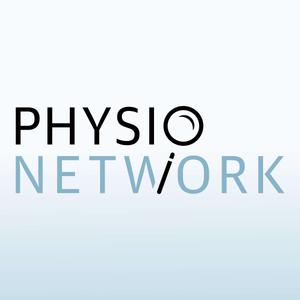 Physio Explained by Physio Network
Physio Explained by Physio Network
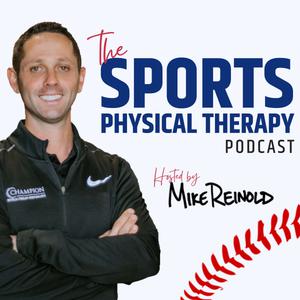 The Sports Physical Therapy Podcast
The Sports Physical Therapy Podcast
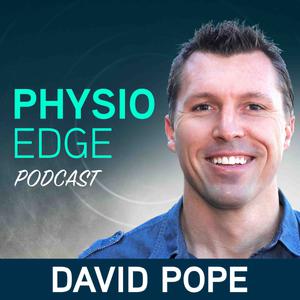 Physio Edge podcast
Physio Edge podcast
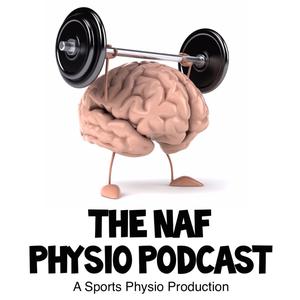 The NAF Physio Podcast
The NAF Physio Podcast